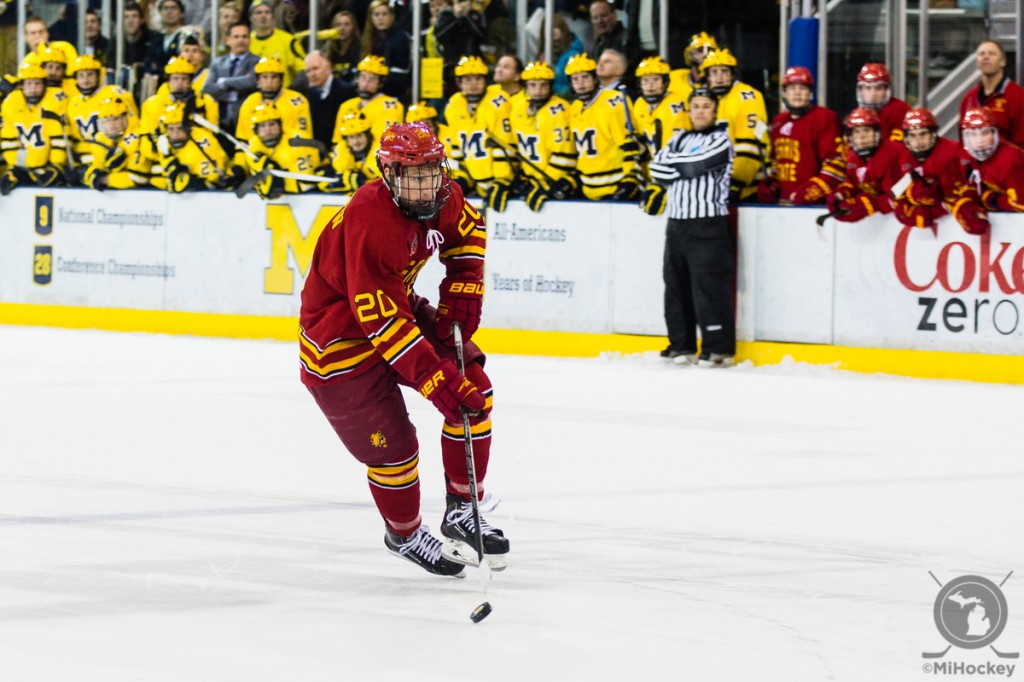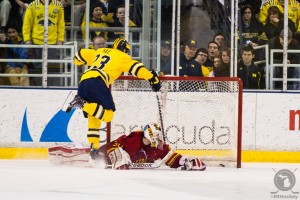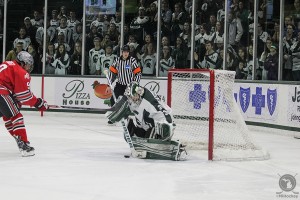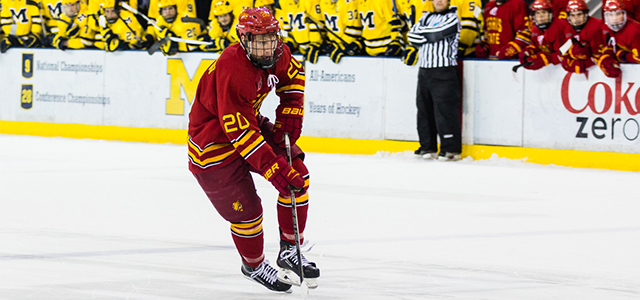Pletsch: How about a little shoutout for the shootout?

By Fred Pletsch –
It’s fashionable among self-professed hockey ‘purists’ to decry the tie-breaking procedure used at every level of hockey (except for the holdouts at the NCAA Men’s Division I level) as a glorified skills competition akin to deciding a baseball game with a home-run derby or a golf tournament with a putting contest.
Fair enough, but heaven forbid that fans (you know, the folks who shell out their hard-earned dollars to be entertained and, you could argue, make the game possible at all) be provided some added value and emotional release for the time, money and passion they invest in the sport.
The insanity that ensues at Yost Ice Arena during intermission when the students exhort the kids riding the Zamboni to ‘throw your shoe’ aside, excitement levels in the crowd at a hockey game are generated primarily by thunderous hits, fights/skirmishes, scintillating saves and goals. The shootout merely combines the latter two to add another element and sense of finality to the competition.

The Big Ten, picking up where the CCHA left off, awards three points in the standings for each game (unlike the mystifying NHL model where a third point comes into play only when a contest is tied after regulation time.) Winner takes all three points in a Big Ten regulation or overtime victory thereby providing incentive for teams actually trying to break a tie instead of going into a stultifying defensive lockdown that is too often prevalent at the pro level. Each team receives a point only after overtime in the Big Ten with the shootout victor awarded the third point.
It was just a five-year data sample but the experience of the CCHA showed that shootouts had a negligible impact on the final standings. During those five seasons there was just a couple of instances where removing the effect of shootout results (i.e. reverting to a two-point system and counting each game that went to shootout as a tie) caused a different placement in the final standings order. And home-ice advantage in the playoffs was affected just once when the fourth and fifth-place teams would have traded places. In other words, the best teams remained atop the standings and the also-rans lagged behind.
The shootout has added an element of intrigue to the Big Ten’s inaugural season.

For example, how long could Michigan State sophomore goalie Jake Hildebrand maintain his run of perfection after starting 3-0 in the penalty-shot competition, including two extra points earned at the expense of the nation’s No. 1 team, Minnesota? (Ohio State proved him to be mere mortal with back-to-back shootout wins on Feb. 7-8.)
How would shootout newbie Joel Rumpel of Wisconsin respond after not having been involved in one for four straight seasons at the college and junior levels? (Michigan’s Luke Moffatt turned the red light on for the only shootout goal on Jan. 31st after Rumpel’s brilliant 39-save performance over 65 minutes.)
Would dynamic Ryan Dzingel bat leadoff or cleanup when Ohio State put a first notch in the SOW (shootout win) column? (Neither as it turned out because the Big Ten points and goal leader never left the bench in a five-round shootout versus Michigan State on Feb. 7, leaving an almost apologetic coach Steve Rohlik to explain in a BTN post-game interview that freshmen David Gust and Nick Schilkey deserved their shots by being lights-out in practice.)
It’s fascinating to discover that a team’s best players might not necessarily be best suited for shootout purposes. Think of the player with Datsyukian hands who rarely gets to showcase those magical moves in-game because his grinding, fourth-line speed usually succumbs to strong backchecking pressure. But there’s nobody chasing him in a shootout and he becomes a valuable asset to his team when there’s an extra point on the line.
I remember walking out of Munn Ice Arena one night last season when a passerby asked a green-clad Spartan supporter, “Who won?”
“We did, in a SHOOTOUT,” exclaimed the fan, his voice resonating with a palpable mix of pride, emotion and excitement. A tied result would never have engendered that type of animated response.
Can’t we all just give a shoutout to the shootout, and shut out the tie?


Pingback:guvesdilort